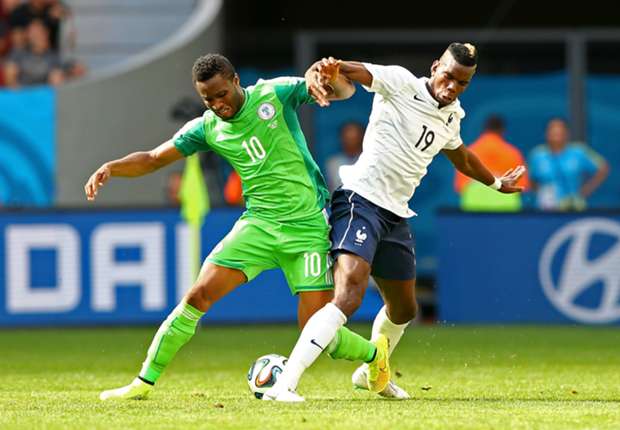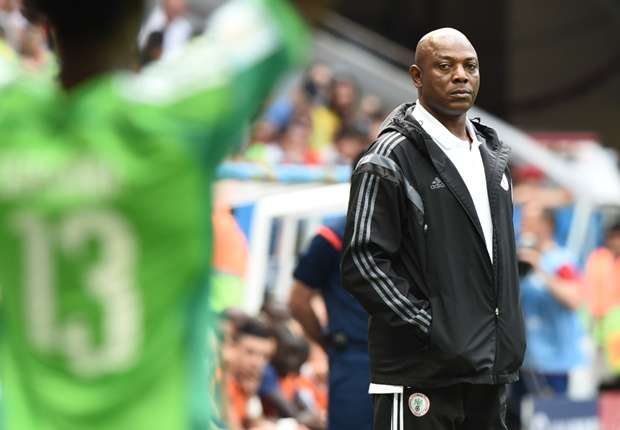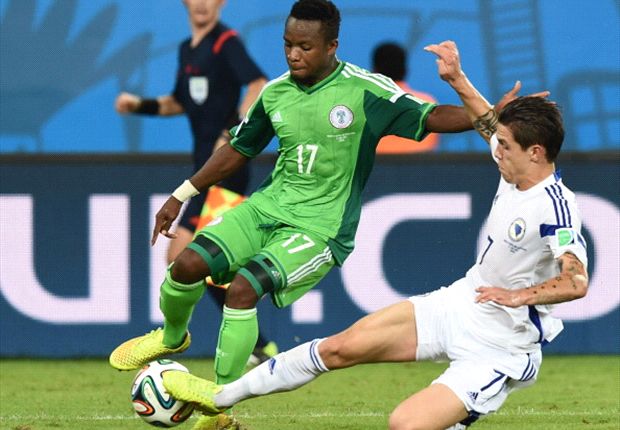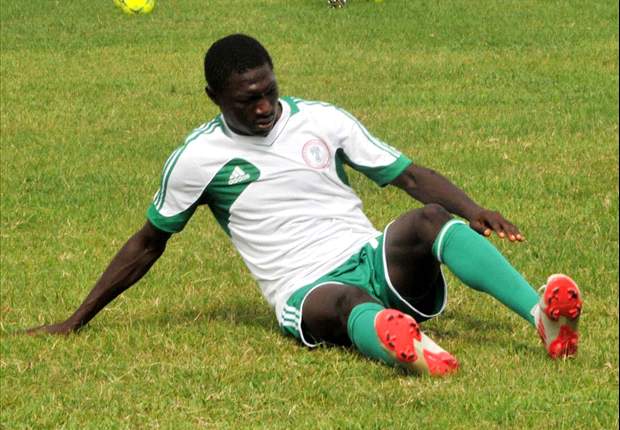
One of the key changes to Stephen Keshi's Nigeria during the World Cup was the switch in formation from the 4-3-3 that won them the African Cup of Nations and saw them not look pushovers in the Confederations Cup to a 4-2-3-1.
Although the change was not totally out of the blue (Keshi experimented with it during qualifiers and friendlies), it was surprising that he decided to make it a more permanent move. The exclusion of one of the key members of his three-man midfield. Sunday Mba, being the clearest indication of his intentions.
It was a baffling decision as to start with, the 4-3-3 was only showing weakness against deep teams, and was suited to the players at the coach’s disposal. To start with, the team has a lot of central midfielders and no natural number 10. The closest is Osaze Odemwinge who can play the role well but still retains the instincts and movement of a goalscorer.
Perhaps this was Keshi's way of recognising Nigeria’s problems versus deep teams and adding an attacking player in order to increase the bodies forward.
This is a sensible course of action, but should not be the only one as our problems against deeper teams have more to do with the style of play (passing, movement etc) and team selection than the actual shape.
In fairness to Keshi, the change in formation was not the only reason that Nigeria looked a bit disjointed.
For any formation to work, each of the players has to contribute their quota to making the team look an organised unit. The fact that in some moments during the games, Nigeria looked a bit disorganised had more to do with the players' performances than whether they were unsuited to the system. The weaknesses Nigeria showed in a 4-2-3-1 would have still been apparent in the 4-3-3. But it has to be said that having three midfielders would have better covered them up.

Keshi | Was the World Cup the right occasion to switch formation?
Knowing what formation to use is a balance between finding a system that fits the whole team and brings out the best of your best players and covers their weaknesses. While the formation change was inconsequential for the attackers, things were very different for the midfield where the strengths and limitations of John Obi Mikel and Ogenyi Onazi were revealed on the grand stage.
For a midfield duo to work, both players have to combine the ability to shield the defence, distribute and be able to win the ball back and keep it for their team, also they should be a able to contribute to the attack by running on and off the ball or passing.
In summary there must be a holder (defensive shield), aggressor (ball-winner), runner and creator. All these features must be infused into two players. The distribution of these features depends on your style.
For an expansive system, to work at its best, both players must have all these features, both players must have the abilities of a runner, creator, and aggressor, with one of them acting as a holder covering his more attacking partner and shielding the defence.
A perfect example of this is the Bastian Schweinsteiger-Javi Martinez partnership for Bayern Munich in the 2012/2013 season; both are very complete players.
In a reactive system, having two players that are very different works. Having the holder be the more technical one and ergo the creator, and the aggressor and runner be the more offensive one. Because the team is compact in defence and therefore defends as a unit, so the creative holder's lack of physicality is not a factor. And when their countering, the said holder can stay back and find his attacking team mates with great outballs, while the physical and aggressive runners charge forward into the attack.
A rough example is the Xabi Alonso- Sami Khedira partnership for Jose Mourinho's Real Madrid (although both players are decently complete but not to Schweinsteiger-Martinez levels).

Onazi | An Aggressor
Mikel and Onazi fall into the second category; Mikel a big man with decent strength and good technical abilities, but isn't blessed with pace and dynamism, a creative holder. Onazi on the other hand is strong, fast, can press, can tackle, runs all day (runner/aggressor).
These ‘types’ are appropriate in a system where Nigeria sit deep and counter, but in the expansive system the Super Eagles played at the World Cup, they struggled. When Onazi pressed high, leaving Mikel behind, and the ball was lost; the opposition would break away and meet only the Chelsea man shielding the defence. He doesn't have the physicality to cover the space needed to cover those behind him.
This was evident in the Argentina and France games. It’s much better in an expansive system that the holder is the one with the physical abilities and he has a more attacking and technical partner, this way the defence is more solid and able to cope with counter-attacking moves.
This was obvious when Reuben Gabriel came on for Onazi against France, he was behind Mikel, almost inverting the midfield roles, and made the Eagles look more balanced.
It’s possible that with more training the players could become more accustomed to the 4-2-3-1 system. But this raises a question, will a national team ever really have the time to test and try out new tactics?
Surely the best thing is to use the players you have at your disposal to create a balanced side that suits the players equally and fix the little quirks. In a bid to solve some little problems we may end up discovering bigger ones.
A three-man midfield is the approach that has worked the best for Keshi’s Nigeria. Mikel sits deep and acts as a holder/playmaker, while Onazi and the third man act as aggressors and runners.

Gabriel | A more balanced presence in a midfield two?
Mikel covers for the other two players' lack of technique and passing and they in turn cover for his lack of dynamism and sheer physicality. The beauty of it is that it can work in a high press and a deep shape as the midfielders are never really far from each other. An example is Antonio Conte's Juventus that has Paul Pogba and ArturoVidal protecting Andrea Pirlo.
Even with a three-man midfield, the team is not perfect, but the problems are much easier to solve than in a two-man as the players don’t have to try to adapt their styles in a short period of time.
If the team can improve the pressing off the ball and movement/passing on it, making them a much harder team to defend against, then there may be no need to change shape to achieve success at the 2015 Cup of Nations in Morocco.
No comments:
Post a Comment